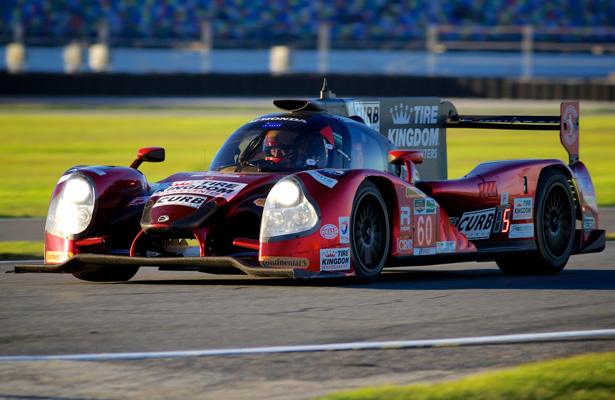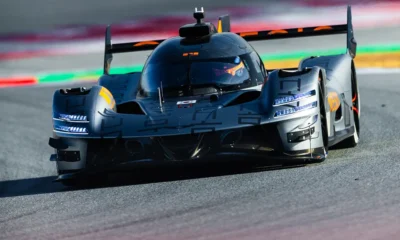
Photo: John Dagys
The future of the LMP2 platform has been a major topic of discussion in the sports car racing world as of late, following the recent proposal for the 2017 regulations, which calls for a spec engine in the ACO-sanctioned series, as well as a limit of four total constructors worldwide. (En Français)
The objective has been clear and that’s to see the chassis be eligible in different championships, an increased collaboration between the FIA, ACO and IMSA, as well as a reduction in costs, by as much as 30 percent.
However, the proposal has received mixed reviews from current and prospective LMP2 manufacturers, with some questioning whether it could deliver on the objectives originally outlined for the overhaul in the first place.
Endurance-Info and Sportscar365 spoke to four undisclosed manufacturers to their viewpoints on the situation.
“It is true we must control costs,” said a representative from a well-known manufacturer that is looking closely at a presence in LMP2. “Now the question is how can we do it. We are facing a global market of about 40 cars.
“Currently, you have to sell at least five cars [at the current cost-capped price] plus five spares kits to begin getting a return on investment. Before arriving in LMP2, we must study the market and if it goes to four constructors, this may complicate matters for others.
“A season in FIA WEC costs 3 million Euros per car. You also have to think about the engine. An engine costs about 80,000 Euros with a rebuild every 6,000 km, knowing that the rebuild costs half the price of an engine.
“It should therefore be a less expensive engine while extending the service life. The [current] cost is 9 Euros per kilometer. Having a [spec] engine in the series would go in the right direction. To sum it up, LMP2 requires some thought.”
With new car sales of closed-top LMP2 machinery capped to 450,000 Euros ($475,000), companies are struggling to make money, with 34 active cars in competition worldwide representing seven different manufacturers.
Limiting the number of constructors would see those selected be able to turn a profit, according to another manufacturer, especially if the price of a turn-key car would see a slight increase.
“The fact is that the FIA, ACO and IMSA are going in the right direction because everyone knows that something must be done,” they said. “Uniting Europe and the U.S. is a good thing because the business model needs to be clearer.
“Having a four-year program… should slightly increase the selling price of the car. Teams prefer quality. Limiting it to four [manufacturers] goes in the right direction with an interesting idea to have an American manufacturer in the loop. It’s necessary that teams amortize the equipment over four years.”
The same manufacturer, though, stressed the importance of bringing the U.S. and Europe together under the same set of base regulations.
“It’s imperative that teams can run on both sides of the Atlantic,” they said. “The [spec] engine is a reduction in costs, as is the single tire supplier. The Americans could have a very specific aero kit. You have to give teams a chance to fight at the top level with the support of a manufacturer.
“It takes a solid car that does more miles by increasing the mileage between rebuilds. If the announcement of the new regulations comes this summer, it will allow manufacturers to structure and review the business format.
“We must plan for the future. Manufacturers [currently] lose money with the sale of cars.”
No fewer than a dozen manufacturers have expressed interest in building LMP2 cars for the new regulations, although the proposal has left at least one constructor surprised with the fact that it could be limited to just four in 2017.
“We are surprised by this approach but we’ll wait until the next moment to find out more,” they said. “We must also see the various criteria for selecting the four manufacturers. How will the selection be made? What will happen if a single engine is retained?
“If HPD is retained as a manufacturer and Nissan is the [spec] engine, are we going to see a Honda [chassis] equipped with a Nissan engine? The engine remains consumable, which means the price will be the same.
“What do we have to do to reduce the costs of the cars? Why not standardize certain parts like bearings or fire extinguisher systems?”
A fourth manufacturer, meanwhile, is excited at the direction the new regulations could take the sport.
“When a lot of people talk about change, a lot of people get upset about it. I kind of like [the proposal] in a way because sometimes the racing world gets a little stale,” said an undisclosed U.S. manufacturer. “I like the change but we like building new cars. I’m excited about the direction of the regulations.
“It may not catch on in the first couple of years [in America] but it would eventually, just like all series do. Whether you look at what happened with Daytona Prototypes which peaked three of four years after the introduction. You saw the same thing happen with WSC in the late ’90s and GTP as well.
“The cars will have longevity and that will make people want to buy cars and invest in them.”
Manufacturers will meet next at Paul Ricard on March 26, where the ACO and FIA are expected to outline the tender process for the four manufacturers and single engine supplier.
It’s expected the regulations will be finalized within the next few months, with a formal announcement coming during this year’s 24 Hours of Le Mans in June.


























